Lemon Goat Cheese Ravioli/Little Gifts
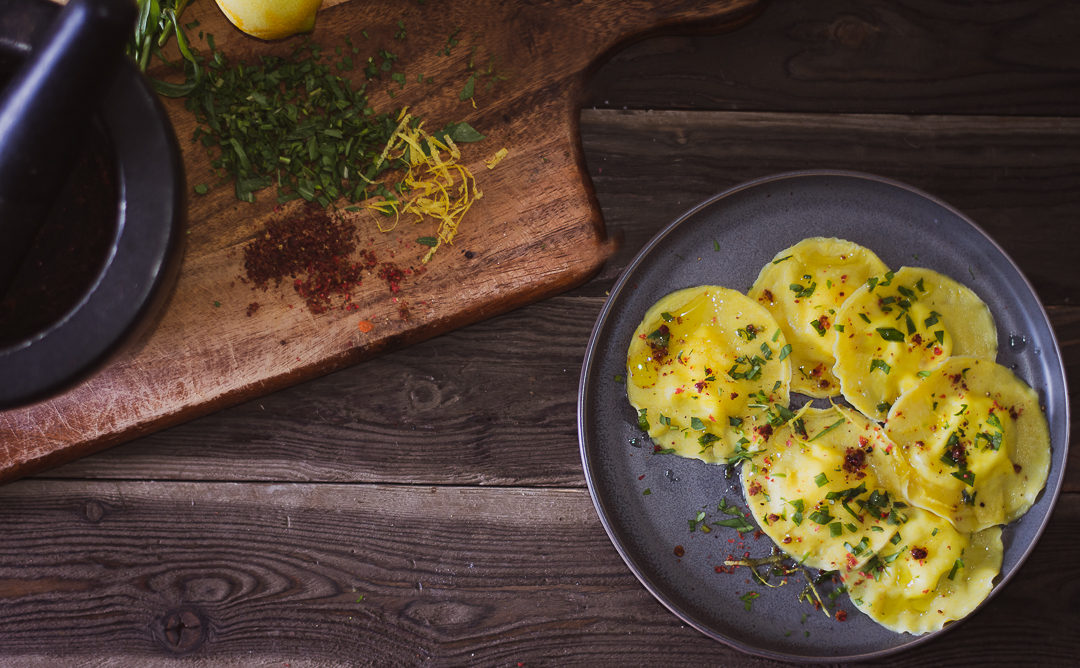
We humans…we are so much more similar than we sometimes think we are. Throughout the world, isolated groups of people created cooking techniques and dishes that became important parts of their cultural identity. What’s interesting is that some of these techniques are almost identical–even though these cultures likely had no contact with each other while they were being developed. Although they were born from different ingredients, climates and traditions, we sometimes find the results are closely related.
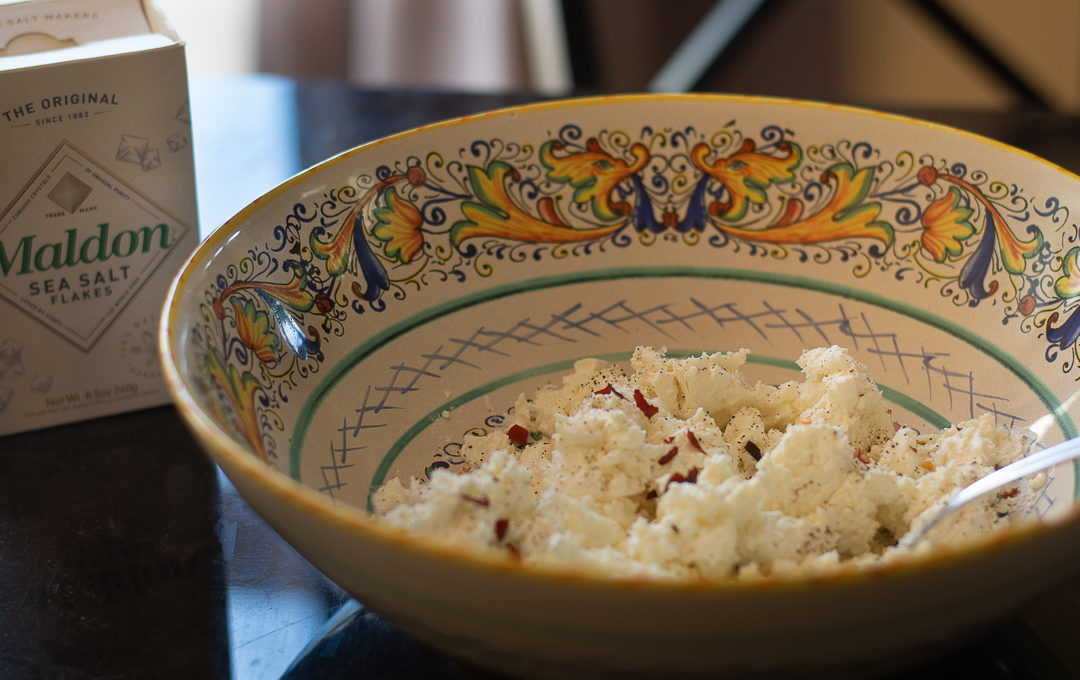
Dumplings are one of these examples. I believe just about every culture has some form of dumpling. They obviously don’t all call them dumplings–they may be called pierogi, wontons, momo, gyoza or samosas. They might be a simple dough that is boiled or fried, or they may contain complex fillings and require hours of labor to create.
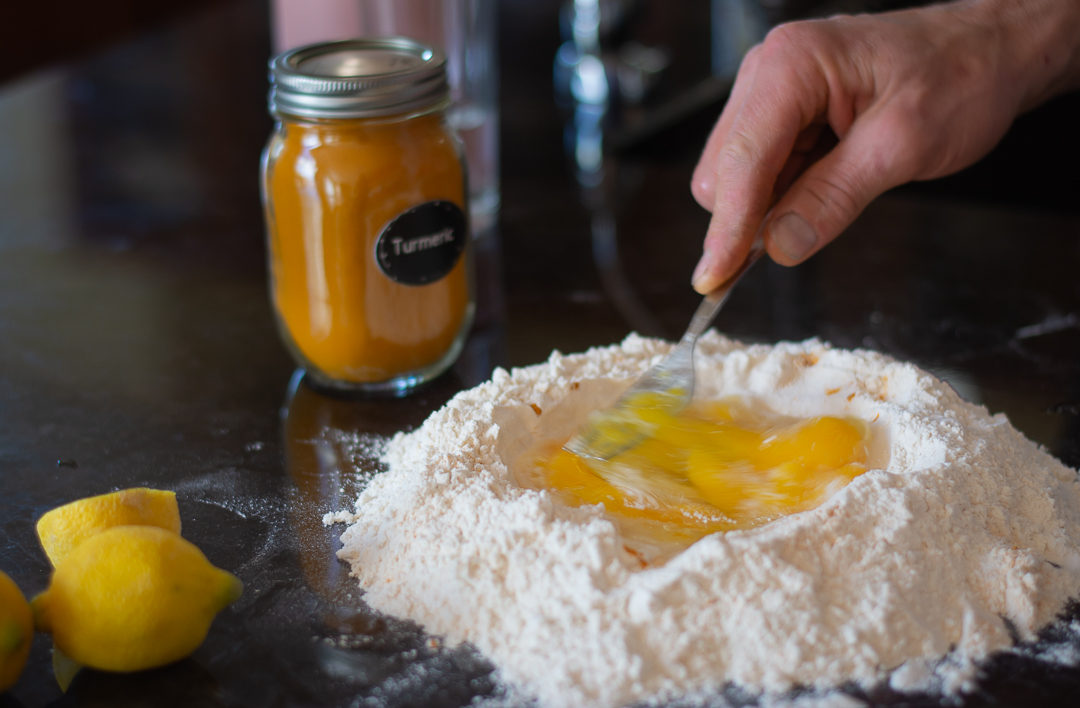
Whether simple or elaborate, dumplings in whatever form they take are a marvel of world cuisine. They were born, not out of necessity, but out of pure creativity. And they are not just delicious. I believe they evolved from people’s desire to show their love through cooking and serving food.
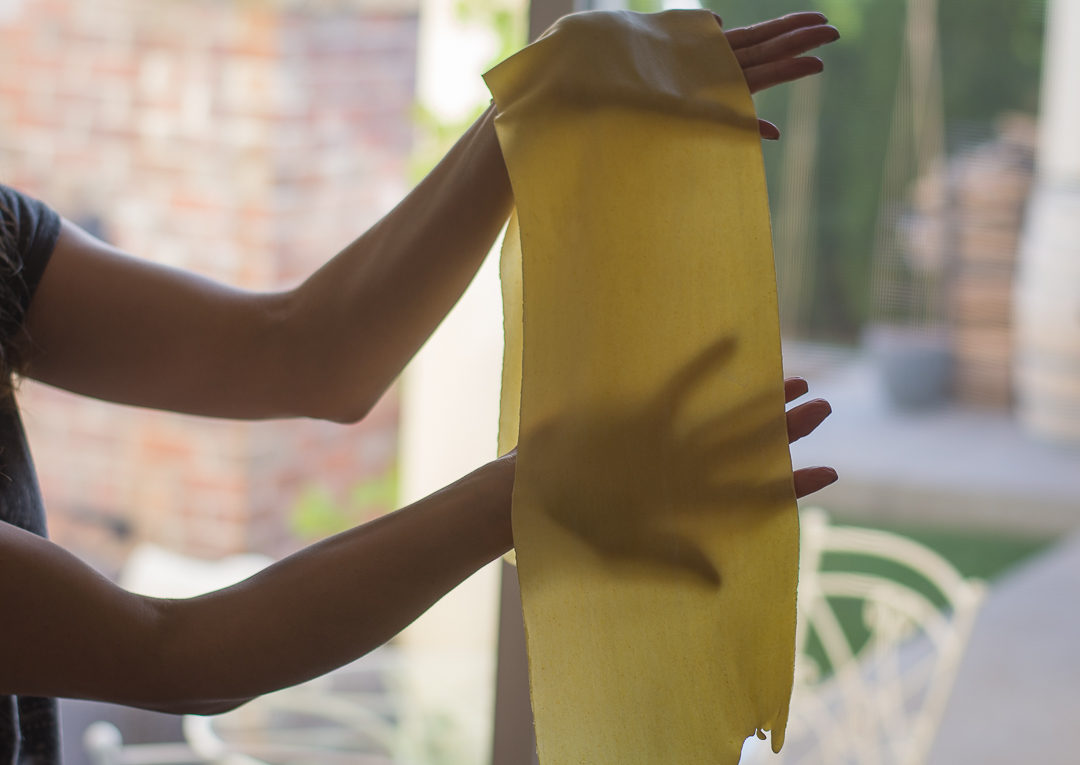
Of course, the first dumplings were likely a way to make a small amount of meat or cheese stretch into a substantial meal. However, that first person to think about wrapping it lovingly into a delicious dough of some kind was clearly bestowing a gift on whoever took a bite. These ravioli are that kind of gift. The packaging is delicate, light, and lemon-scented. Unwrap it and inside you’ll find a pleasingly tangy and creamy filling. And don’t skip the pink peppercorn on top. They add color, like beautiful ribbons–but they also add a gorgeous floral fruitiness that pairs really well with the flavors in this dish.
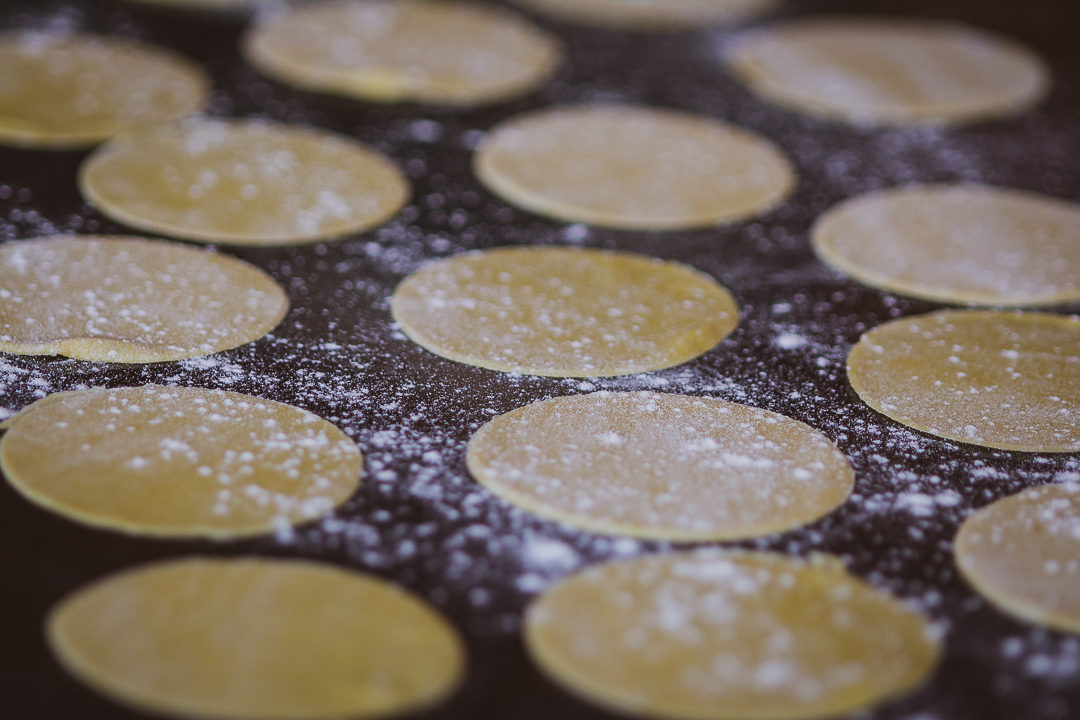
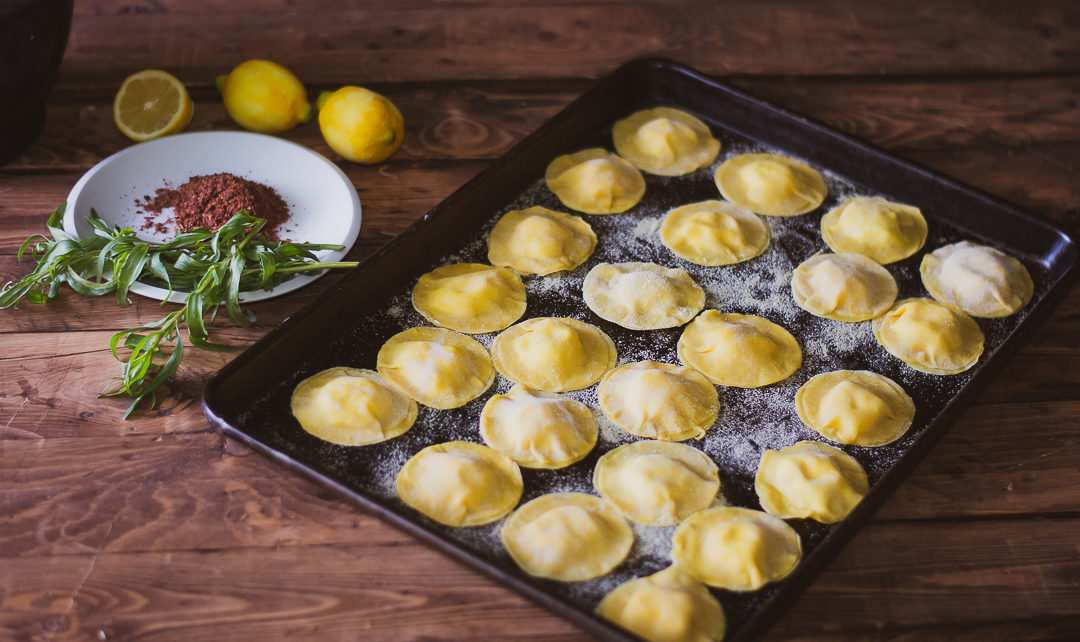
This recipe is from Yotam Ottolenghi’s book Plenty–and this recipe is another that proves that Ottelenghi is a genius when it comes to flavor combinations. Like any filled dumpling from any global cuisine, these are a bit time-consuming. However, make them with love and give them to your family and friends anytime you’d like to show just how much they mean to you.

Ingredients
For the pasta
- 3 tbsp olive oil
- 3 medium eggs
- 330 g ’00’ flour plus more for rolling
- ½ tsp turmeric
- Grated zest of 3 lemons
- Semolina
For the filling
- 300 g creamy mild goat’s cheese
- ½ tsp Maldon sea salt
- 1 pinch chilli flakes
- Freshly ground black pepper
- 1 egg white beaten
To serve
- 2 tsp pink peppercorns crushed
- 1 tsp roughly chopped tarragon
- Grated zest of 1 lemon
- Lemon juice optional
- Olive oil
Instructions
- Mix the oil and eggs. Put the flour, turmeric and zest in a food processor, add the oil and egg mix, and blend to a crumbly dough (it may require extra flour or oil). Once the dough has come together and is smooth (you may need to work it a little by hand, too), divide it into four thick, rectangular blocks. Wrap in clingfilm and chill for anything from 30 minutes to two days.
- Dust a work surface with flour. Take a piece of dough and flatten with a rolling pin. Set a pasta machine to its widest setting and pass through. Repeat, narrowing the setting a notch each time, until you reach the lowest setting. Place pasta sheets flat under a moist towel, so they don’t dry out.
- Use a fork to crush all the filling ingredients together, apart from the egg white. Use a pastry cutter (or rim of a glasto stamp out pasta circles roughly 7cm in diameter. Brush each with egg white and place a heaped teaspoon of filling in its centre. Place another disc on top and, with fingers dipped in flour, squeeze out any air as you bring the edges of the discs together. You should end up with a pillow-shaped centre surrounded by a 1cm edge. Tighten the edges until you can't see a seam. Repeat with the rest of the dough, place the ravioli on a tray sprinkled with semolina, and leave to dry for 15 minutes. If you'd like to make it ahead, you can cover them with plastic wrap and leave in the refrigerator for up to two days.
- To serve, bring a large pan of salted water to the boil. Cook the pasta for two to three minutes, until al dente, drain and divide between four plates. Sprinkle with pink peppercorns, tarragon and lemon zest. Drizzle with olive oil, add salt and a squirt of lemon juice (if desired), and serve piping hot.
